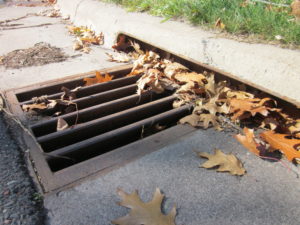Sequester Carbon in Your Soil
Individual and household actions
Home gardens can be an effective way to sequester (maintain or increase) carbon in your soil while providing your family and friends with fresh, nutritious, and healthy produce. Four times the carbon is stored in the soil as is measured in the atmosphere.
A healthy soil is teeming with microorganisms and fungi which feed on carbon. As these organisms digest organic matter (food scraps, leaves, and compost), the soil becomes more stable and less carbon is released to the atmosphere. Here are some actions you can take to maintain/increase the carbon in your soil.
- Allow grass to grow a bit higher to encourage deeper root systems and greater microbial and fungal growth.
- Feed the soil in your garden with compost you make yourself from food scraps, coffee grounds, grass clippings, and leaves, or from bagged, ready-to-use organic compost available locally from WLSSD.
- If you do not have a compost pile, share your food scraps with WLSSD community composting by dropping them off at specified sites.
- Avoid the use of pesticides and herbicides which discourage microbial and fungal growth.
- Select a variety of plants for your gardens and landscapes. Favor those which are native to this area, such as blueberries and serviceberries, which are likely to do better.
- Once planting is completed in the spring, cover any bare earth with mulch—grass clippings, leaves, or straw—which will keep down weeds and maintain moisture in the soil.
Industrial and commercial actions
The agriculture sector is one of the biggest emitters of carbon dioxide to the atmosphere. In order to reduce the emissions of this greenhouse gas, a practice of agricultural production known as regenerative agriculture is finding greater numbers of adherents. After generations of using pesticides, herbicides and unsustainable practices, farmers, whose soil has been damaged and depleted of vital microorganisms, are using regenerative agriculture to get back in harmony with nature. This system of soil care emphasizes soil health, attention to water management, and fertilizers to improve soil rather than deplete its organic components, specifically carbon. These are actions that regenerative agriculture recommends:
- Reduce carbon loss by reducing soil tillage.
- Practice contour plowing and terracing in sloped/hilly areas to further reduce erosion and carbon loss.
- Fertilize using organic compost, manure, and crop residues to increase carbon absorption in the soil.
- Use cover crops to both reduce carbon loss and increase carbon absorption in the soil.
Resources:
Did you take this action? Report it!
Help us show our collective community impact by reporting that you took this action.



